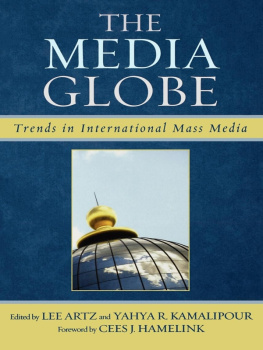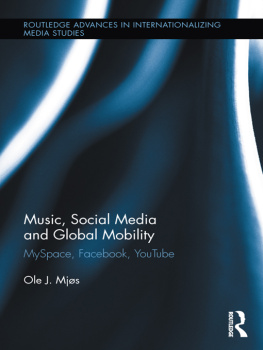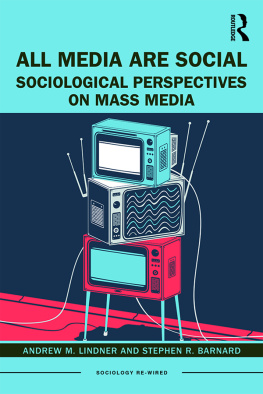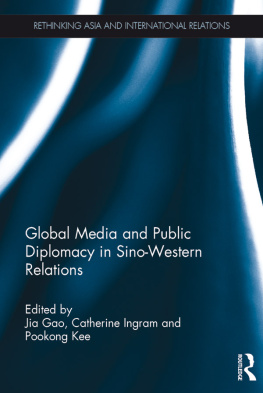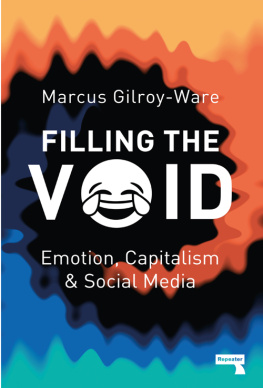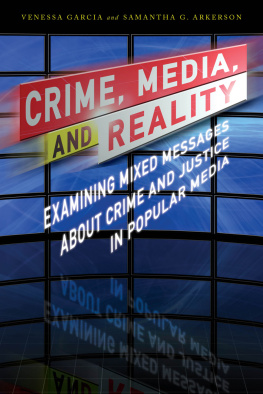
CONTENTS
List of Tables
- Chapter 04
- Chapter 07
Guide
Pages
Global Entertainment Media
A Critical Introduction
Lee Artz
This edition first published 2015
2015 John Wiley & Sons, Inc
Registered Office
John Wiley & Sons, Ltd, The Atrium, Southern Gate, Chichester, West Sussex, PO19 8SQ, UK
Editorial Offices
350 Main Street, Malden, MA 02148-5020, USA
9600 Garsington Road, Oxford, OX4 2DQ, UK
The Atrium, Southern Gate, Chichester, West Sussex, PO19 8SQ, UK
For details of our global editorial offices, for customer services, and for information about how to apply for permission to reuse the copyright material in this book please see our website at www.wiley.com/wiley-blackwell.
The right of Lee Artz to be identified as the author of this work has been asserted in accordance with the UK Copyright, Designs and Patents Act 1988.
All rights reserved. No part of this publication may be reproduced, stored in a retrieval system, or transmitted, in any form or by any means, electronic, mechanical, photocopying, recording or otherwise, except as permitted by the UK Copyright, Designs and Patents Act 1988, without the prior permission of the publisher.
Wiley also publishes its books in a variety of electronic formats. Some content that appears in print may not be available in electronic books.
Designations used by companies to distinguish their products are often claimed as trademarks. All brand names and product names used in this book are trade names, service marks, trademarks or registered trademarks of their respective owners. The publisher is not associated with any product or vendor mentioned in this book.
Limit of Liability/Disclaimer of Warranty: While the publisher and author have used their best efforts in preparing this book, they make no representations or warranties with respect to the accuracy or completeness of the contents of this book and specifically disclaim any implied warranties of merchantability or fitness for a particular purpose. It is sold on the understanding that the publisher is not engaged in rendering professional services and neither the publisher nor the author shall be liable for damages arising herefrom. If professional advice or other expert assistance is required, the services of a competent professional should be sought.
Library of Congress Cataloging-in-Publication data applied for
9781118955444 (paperback)
9781118955437 (hardback)
A catalogue record for this book is available from the British Library.
Cover image: Danil Melekhin / iStockphoto
Introduction
Entertainment, Television, and Cultural Hegemony
Tell me a story. Make me laugh. Entertain me. From childhood on, humans share stories to inform, educate, and entertain. In every joke and pastime, lessons about social norms, values, and morals are shared. We have laws, but stories express why we have laws and what happens to those who disobey. Entertaining stories from Aesops fables, fairytales, and the latest Disney animation express and evaluate good and evil.
In the twenty-first century the primary storytellers are global media, and like stories told around the campfire, they promote and criticize some identities and kinds of social organization and celebrate others. In doing so they reflect the interests of the storyteller (Machin & Van Leeuwen, 2007, p. 39). The stories circulated most widely are those created by consolidated international media: childrens stories in cartoons, telenovelas, game shows, action-adventures, situation comedies, mysteries, anime, factual entertainment, sports, music, movies, and news. All of them are entertainment.
Global entertainment crosses national and cultural boundaries, promoting consumerism in theme and format, adjusting to local cultural norms and affecting the social order in many identifiable ways, some of which will be discussed in this book.
From the earliest media studies to contemporary concerns, media have been understood as central to society but not all have agreed on medias political or cultural effect, nor has there been agreement on the relationships between media and the rest of the social order. This book finds media to be part of our larger social order that has recognizable social class divisions. Such an approach challenges the accepted knowledge broadcast by contemporary media and protected by their academic admirers. I follow the Chilean novelist and social critic Ariel Dorfman (1983) in that I do not pretend to infallibility, but feel it is my duty to profane the secular cathedral and wonder out loud, in the middle of the service that gathers the priests of knowledge, and the faithful to be enlightened (p. 136) how do the architecture and icons of popular media become so worshipped and to what values and beliefs are we converted?
This is not an American phenomenon. Technological progress and growing competition push media corporations to expand their businesses nationally and internationally. Around the world, in Britain, Germany, India, Japan, Brazil, and everywhere commercial media predominate, media express cultural values, social norms, and even commonsense universal beliefs.
New global structures of production and distribution are altering daily life and cultures. Just as new social relations of production appear in leading capitalist enterprises, the economic operations and cultural contributions of global media have been transformed as well. For the average man and woman, consumption and consumer goods become means for expressing identity and lifestyle, particularly when occupational and economic roles lose their significance as sources of values in the face of popular culture and ubiquitous media presence and power.
Entertainment
With the advent of media deregulation, privatization, and commercialization, nations around the world have opened their media operations to transnational mergers, joint ventures and foreign direct investment (FDI). As part of the neoliberal drive to privatize everything, commercial enterprise dominates media in most countries. Privatized, commercialized media turn to advertising and subscription for profits, looking to reduce production costs at the same time. Not surprisingly, entertainment media is now the most prevalent media form in every country. Following deregulation, entertainment media in Europe took a quantum leap from 93 to some 1,500 entertainment channels (according to Screen Digest, as cited in Thussu, 2009, p. 38). In Africa, francophone transnational media broadcast mostly movies, sports, music, and childrens programs (Mytton, Teer-Tomaselli, & Tudesq, 2005). In India, News Corps Star TV is indicative of television formats: of its 10 trans-Indian channels, nine are dedicated to entertainment, music, and sport (Thussu, 2005, p. 165). East Asian television, especially Japanese and Taiwanese, is wedded to entertainment, advertising, and idols who appear on talk, music, and even fictional series to titillate and stimulate fans and consumers (Karlin, 2012; Galbraith, 2012). Drama, sport, music, games shows, and variety shows comprise the bulk of television broadcasting in Latin America. With the appearance of commercial broadcasting in Russia since the 1990s, entertainment dominates television schedules (Endaltseva, 2011; Vartanova, 2008). Commercial TV and print media in Turkey promote this culture of entertainment (Algan, 2003, p. 185). Even accepting the news value of various television magazine shows, the US television schedule is primarily entertainment: dramas, soaps, situation comedies, childrens shows, game shows, reality contests, sports, and lifestyle/hobby stations predominate. Global entertainment media reached $2.2 trillion in revenue in 2012, with entertainment media rapidly embracing new and emerging technologies and television remaining the primary source of programming for all media platforms (MarketingCharts, 2008). Former Disney CEO Michael Eisner notes that the entertainment industry is not so much Americanizing the world as planetizing entertainment (Miller et al., 2008, p. 176).
Next page

